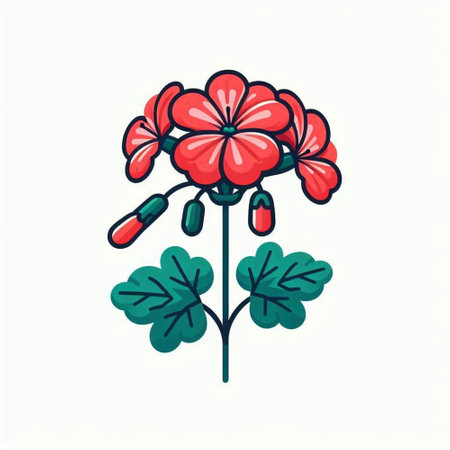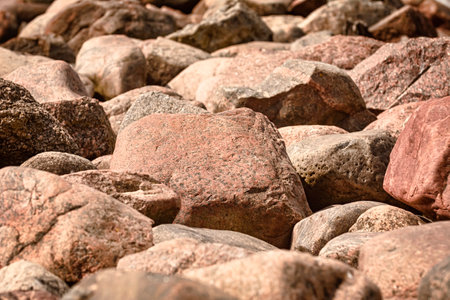1. Introduction to Rock Gardens in America
Rock gardens are quickly becoming a favorite landscaping feature across the United States, offering a unique blend of natural beauty, low maintenance, and water-wise gardening. Whether you live in the arid Southwest or the lush Pacific Northwest, rock gardens can be customized to suit local climates and personal tastes. They showcase an artful mix of mulch, boulders, and pebbles to create visually stunning and practical outdoor spaces.
Regional Styles and Key Design Influences
Different regions in America have embraced rock gardens with their own twist, drawing on native plants, local stone types, and traditional design philosophies. Heres a quick overview:
| Region | Common Features | Popular Stone Types | Design Influence |
|---|---|---|---|
| Southwest (Arizona, New Mexico) | Cacti, succulents, drought-tolerant plants, gravel mulch | Red sandstone, lava rock | Desert landscapes, Native American motifs |
| Pacific Northwest (Washington, Oregon) | Mosses, ferns, river rocks, lush greenery | Boulders, granite river stones | Japanese Zen gardens, woodland themes |
| Northeast (New York, Pennsylvania) | Alpine plants, groundcovers, layered mulches | Slate, fieldstone | Classic English rockeries, cottage gardens |
| Southeast (Georgia, Carolinas) | Ornamental grasses, colorful pebbles, flowering perennials | Limestone, quartzite | Tropical touches, southern charm |
The Appeal of Rock Gardens Today
With growing interest in sustainable landscaping and water conservation, more American homeowners are turning to rock gardens. They not only reduce lawn space but also add year-round texture and structure using mulch for weed control and moisture retention, boulders as dramatic focal points, and pebbles for pathways or accent borders. Each element plays an important role in shaping the look and feel of a modern American rock garden.
2. Mulch: Functions and Visual Impact
Mulch is a key element in rock gardens across the United States, serving both practical and decorative purposes. Using mulch in your rock garden helps create a tidy, natural look that blends perfectly with stones and plants. Let’s explore how mulch enhances soil health, conserves moisture, and contributes to the visual appeal of your landscape.
How Mulch Supports Soil Health
One of the main reasons gardeners use mulch is to improve soil quality. Mulch acts as a protective layer over the soil, reducing erosion caused by wind and rain. Organic mulches like shredded bark or wood chips break down over time, adding valuable nutrients back into the soil. This process supports healthy root growth for your rock garden plants.
Soil Benefits of Mulch
| Benefit | Description |
|---|---|
| Erosion Control | Prevents soil from washing away during heavy rain or watering. |
| Nutrient Boost | Adds organic matter and nutrients as it decomposes. |
| Temperature Regulation | Keeps soil cooler in summer and warmer in winter, protecting plant roots. |
Water Conservation Made Easy
In many parts of the U.S., water conservation is an important concern for gardeners. Mulch helps retain moisture in the soil by reducing evaporation. This means you’ll spend less time watering and more time enjoying your garden. Especially during hot American summers, a layer of mulch keeps your plants happy and hydrated.
Types of Mulch Commonly Used in Rock Gardens
| Type of Mulch | Main Features | Best For |
|---|---|---|
| Bark Mulch | Natural look, slowly decomposes, adds nutrients | Woodland-style or rustic rock gardens |
| Pine Needles (Pine Straw) | Acidic, lightweight, easy to spread | Gardens with acid-loving plants like azaleas or rhododendrons |
| Gravel or Crushed Stone | Low maintenance, excellent drainage, modern appearance | Drought-tolerant or contemporary rock gardens |
| Cocoa Bean Hulls | Pleasant scent, dark color, enriches soil quickly | Small decorative areas (keep away from pets) |
The Natural Look: Mulch as an Aesthetic Feature
Beyond its practical uses, mulch adds texture and contrast to your rock garden design. Choosing mulch colors that complement your boulders, pebbles, and plantings can make each feature stand out beautifully. For example, dark brown bark looks great next to gray rocks and green succulents, while lighter pine straw gives a soft touch around sandstone boulders.

3. Boulders: Anchoring Elements in Landscape Design
In American rock gardens, boulders are more than just big rocks—they serve as the backbone of landscape design. These substantial stones provide structure and help organize the space, making them essential for a visually appealing garden. Lets explore why boulders matter so much and how they can transform your outdoor space.
The Importance of Boulders as Structural Focal Points
Boulders act like natural sculptures in a rock garden. Their size and shape immediately draw the eye, creating instant focal points that anchor your design. When placed thoughtfully, boulders give your garden a sense of stability and permanence—almost like they have always belonged there. This natural look is highly valued in American landscaping, where blending with the environment is key.
Creating Scale and Depth
One of the main roles of boulders is to introduce scale and depth to your garden. By mixing large boulders with smaller rocks and plants, you can make even a small space feel larger and more dynamic. The contrast between sizes helps guide visitors eyes through the landscape, inviting exploration and curiosity.
| Boulder Placement | Visual Effect | Best Used For |
|---|---|---|
| Clustered Together | Creates a natural outcrop look, adds drama | Focal areas, central features |
| Partially Buried | Makes boulders appear settled & realistic | Naturalistic gardens, blending with surroundings |
| Isolated or Solo Boulder | Draws strong attention, stands out as art piece | Sculptural effect, entryways |
| Layered with Pebbles/Mulch | Adds texture contrast, highlights stone shapes | Borders, pathways, transitions between spaces |
Boulders for Visual Drama and Interest
Boulders introduce bold visual drama to rock gardens. Their rugged surfaces reflect light differently throughout the day, adding changing shadows and highlights that keep the landscape interesting. In American yards, using local stone types can also help connect your garden to regional geology, making your space feel uniquely tied to its location.
Tips for Using Boulders in Your Rock Garden:
- Select boulders with varied shapes and colors: This keeps the garden from looking too uniform or artificial.
- Avoid placing all boulders at equal distances: Natural randomness creates authenticity.
- Use plants around boulders: Ground covers or grasses soften hard edges and enhance the natural vibe.
- Bury part of each boulder: A general rule is to sink about one-third into the ground for stability and realism.
Boulders bring an undeniable sense of drama and structure to any American rock garden. Their presence helps define outdoor spaces, creates eye-catching focal points, and gives your landscape both personality and purpose—all while echoing the beauty of nature itself.
4. Pebbles: Texture, Contrast, and Cohesion
Pebbles are much more than just decorative fillers in a rock garden—they play a crucial role in tying the whole landscape together. By thoughtfully selecting and placing pebbles, you can create visual harmony, highlight planting areas, and introduce appealing textures that make your garden stand out.
Choosing the Right Pebbles for Your Rock Garden
When picking pebbles, it’s important to consider their size, color, and finish. For American-style rock gardens, natural shades like earth tones or river-washed grays work well and blend seamlessly with native plants and boulders. Here’s a quick guide to help you choose:
| Type of Pebble | Best Use | Visual Effect |
|---|---|---|
| Smooth River Pebbles | Pathways & Accents | Soft contrast, natural look |
| Crushed Granite | Mulch substitute & borders | Sharp texture, bold definition |
| Polished Black Stones | Feature areas & modern gardens | High contrast, sleek finish |
| White Marble Chips | Around succulents & cacti | Bright highlights, crisp edges |
Using Pebbles for Texture and Contrast
Pebbles add depth and interest to the garden by introducing different textures. Layering fine pebbles around delicate plants or using chunkier stones near larger boulders creates dynamic visual contrast. Mixing sizes also helps avoid a flat look—try scattering smaller pebbles between larger rocks or alongside stepping stones for a more natural feel.
Highlighting Planting Areas with Pebbles
Pebbles are excellent for drawing attention to specific planting zones. Surrounding a cluster of drought-tolerant perennials or succulents with a ring of contrasting pebbles acts like a picture frame. Not only does this accentuate the plants, but it also suppresses weeds and retains moisture—both practical and beautiful benefits.
Cohesion: Unifying the Garden’s Look
A key design trick is to repeat pebble types or colors throughout different sections of your garden. This repetition creates unity and flow. For example, using the same kind of pebble along paths, around focal boulders, and in mulch beds connects each part visually, making the whole landscape feel intentional and balanced.
By thoughtfully selecting and placing pebbles in your rock garden, you’ll achieve an attractive blend of cohesion, contrast, and texture that enhances every corner of your outdoor space.
5. Practical Tips: Blending Aesthetics with Sustainability
Best Practices for Choosing Materials
When designing a rock garden, the materials you choose will shape both its look and how eco-friendly it is. Here are some key tips:
| Material | What to Look For | Why It Matters |
|---|---|---|
| Mulch | Choose natural, locally-sourced mulch like shredded bark or pine needles. Avoid dyed or rubber mulches. | Natural mulch breaks down over time, enriching the soil and supporting local ecosystems. |
| Boulders | Source stones from nearby quarries or reclamation sites. Pick colors and shapes that blend with your region’s landscape. | Local boulders feel authentic and reduce transportation emissions. |
| Pebbles & Gravel | Select river rock, decomposed granite, or pea gravel in neutral tones. Check for sustainable harvesting practices. | Pebbles help with drainage and keep weeds at bay while adding texture. |
Maintaining a Low-Maintenance Landscape
One of the joys of a rock garden is easy care. Here’s how to keep maintenance low:
- Layer Mulch Wisely: Apply 2-3 inches of mulch around plants to retain moisture and suppress weeds.
- Strategic Boulder Placement: Use large rocks to anchor the design and create natural divisions—reducing mowing and trimming needs.
- Pebble Paths: Lay pebbles in walkways or between stepping stones for weed control and a tidy appearance.
- Drought-Tolerant Plants: Pair rocks with native or drought-hardy plants to cut down on watering and fertilizing.
Balancing Beauty with Environmental Responsibility
Your rock garden can be both stunning and sustainable if you consider these eco-friendly approaches:
- Avoid Invasive Species: Only use plants that won’t take over your garden or harm local wildlife.
- Create Habitats: Boulders and mulch provide shelter for beneficial insects, birds, and pollinators.
- Sustainable Watering: Design your garden so rainwater flows naturally among rocks—reducing runoff and making the most of every drop.
- No Plastic Borders: Use stone edging instead of plastic to define garden beds, keeping things environmentally friendly.
Quick Reference: Sustainable Rock Garden Checklist
| Task | Sustainable Option |
|---|---|
| Selecting Mulch | Locally-sourced organic materials only |
| Sourcing Boulders/Pebbles | Nearby quarries or repurposed stones |
| Irrigation Methods | Drip irrigation or rainwater harvesting systems |
| Plant Choices | Natives or drought-tolerant varieties |
| Lawn Alternatives | Pebble paths, ground covers, or mosses instead of turf grass |
The Takeaway: Simple Steps for Lasting Impact
You don’t need to sacrifice beauty for sustainability. By carefully picking your mulch, boulders, and pebbles—and thinking about long-term care—you’ll create a rock garden that’s gorgeous, practical, and kind to the environment.


